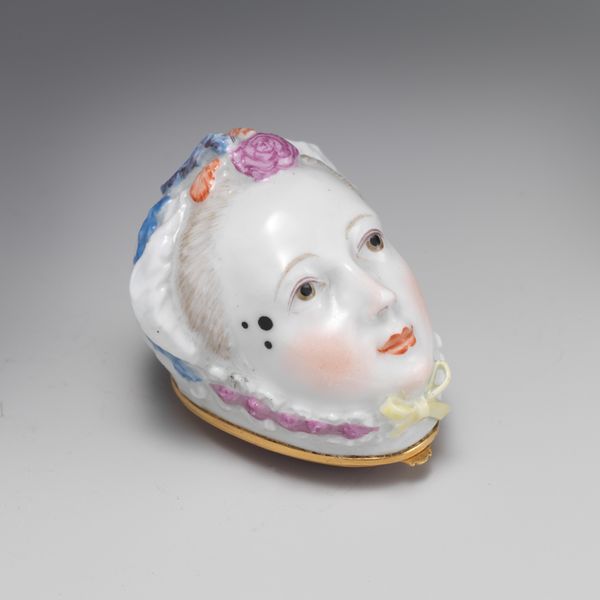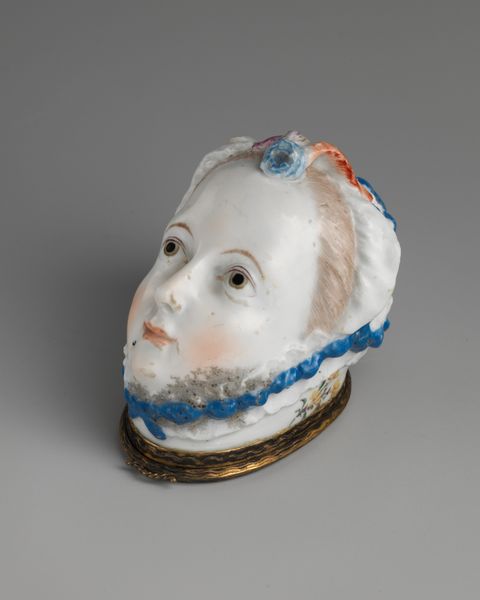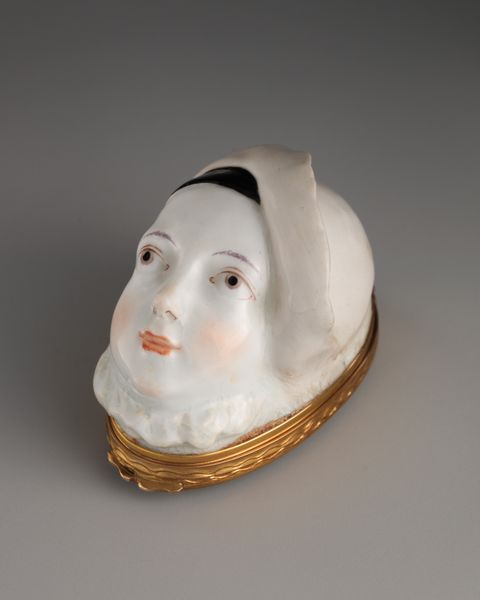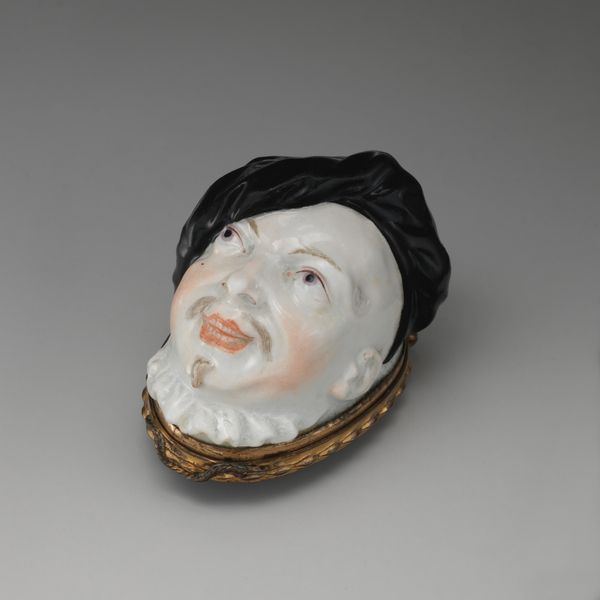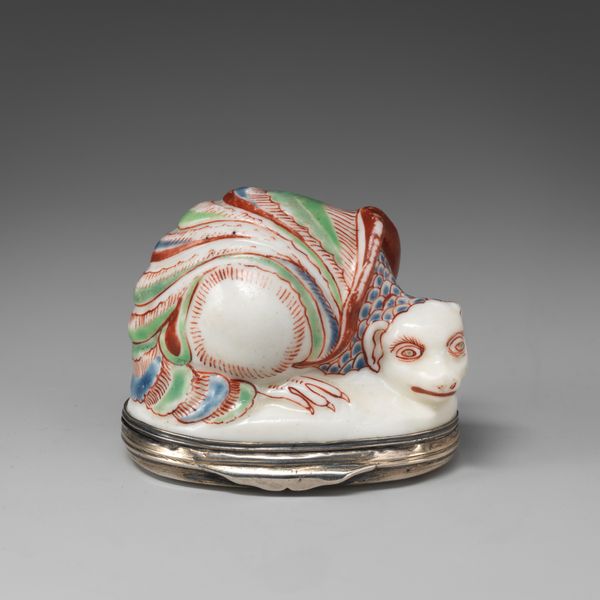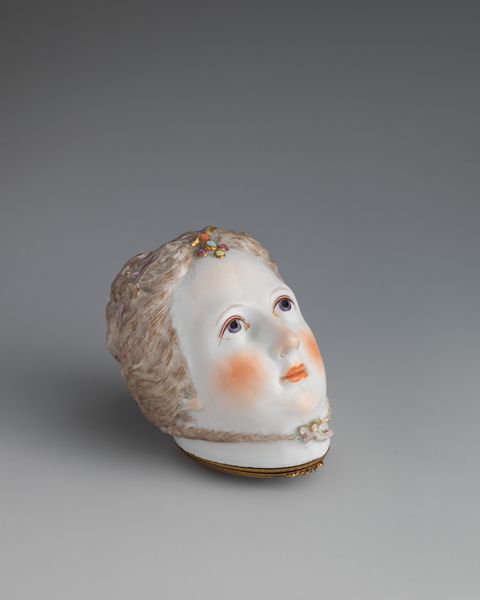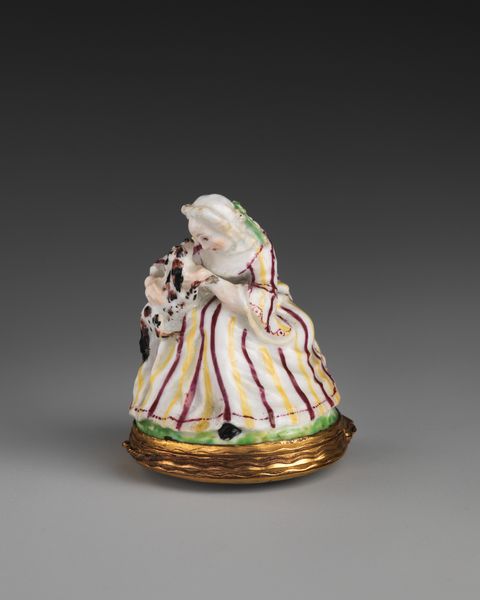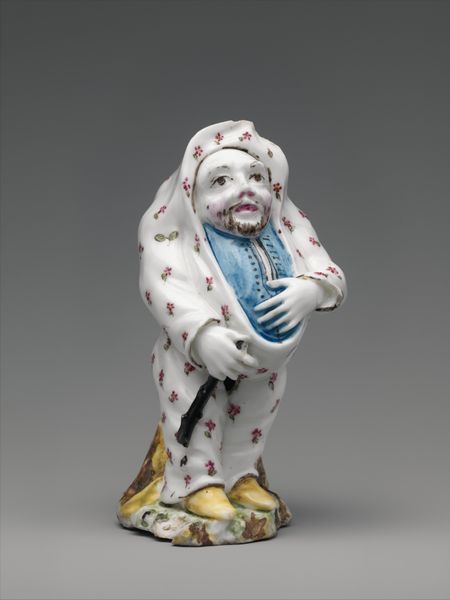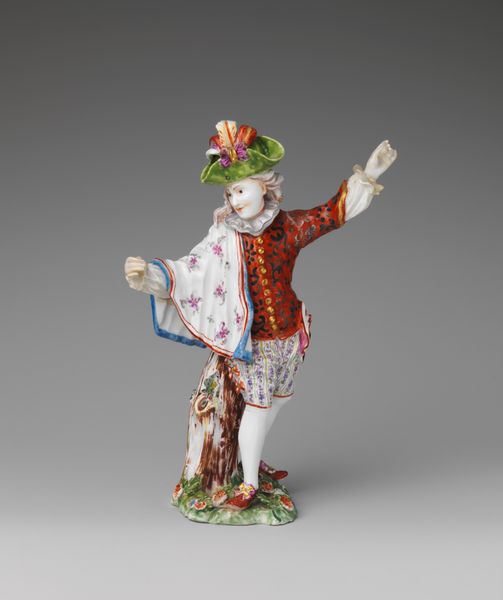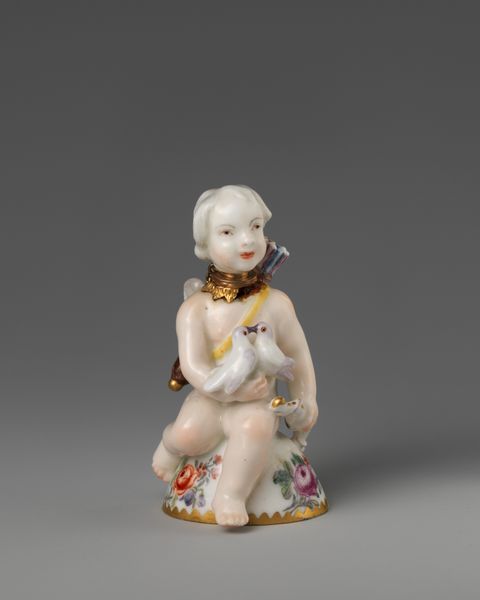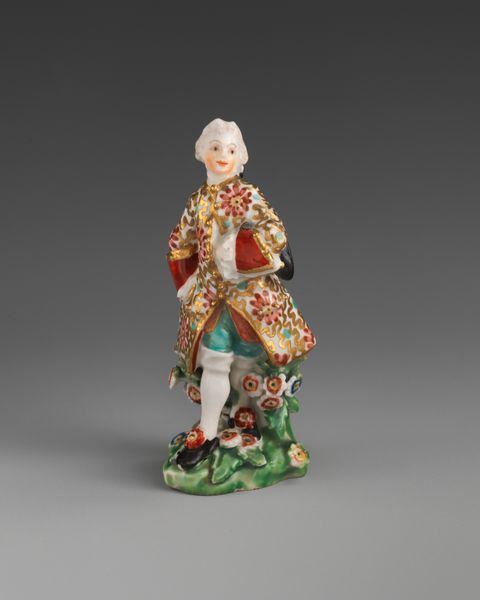
ceramic, porcelain, sculpture
#
portrait
#
head
#
ceramic
#
porcelain
#
sculpture
#
men
#
decorative-art
#
rococo
Dimensions: Overall: 1 3/8 × 2 1/2 in. (3.5 × 6.4 cm)
Copyright: Public Domain
Editor: Here we have "Man's Head," a porcelain sculpture crafted by the Chelsea Porcelain Manufactory between 1755 and 1765. It's quite striking, almost like a caricature. What do you see in this piece beyond the surface? Curator: The whimsical aesthetic belies a more complex commentary on class and power. Consider the Rococo period; it was a time defined by aristocratic excess just before the revolutionary fervor swept Europe. Editor: You're thinking about the pre-revolutionary context, then? Curator: Precisely. This piece is not just decorative. The exaggerated features, the very artifice of the material, they mock the elites and their obsessive self-fashioning. The "Man's Head" presents a satiric perspective, reflecting a changing social landscape. How do the striped colors affect this satire? Editor: They make the hair look almost clownish. So, the artisan is critiquing masculinity and the power structures it upheld at the time? Curator: Indeed. It invites us to question who is truly in control and the absurdity of clinging to outdated ideals. It prompts us to think about issues of privilege and power imbalances within the frame of history. Editor: That really changes my view of it. It's more than just a pretty object. Curator: Exactly! Art is very seldom only decorative or aesthetic; often, it makes implicit political, social and historical comments that may change our view of it and ourselves. I'm happy you are interested in this perspective.
Comments
No comments
Be the first to comment and join the conversation on the ultimate creative platform.
